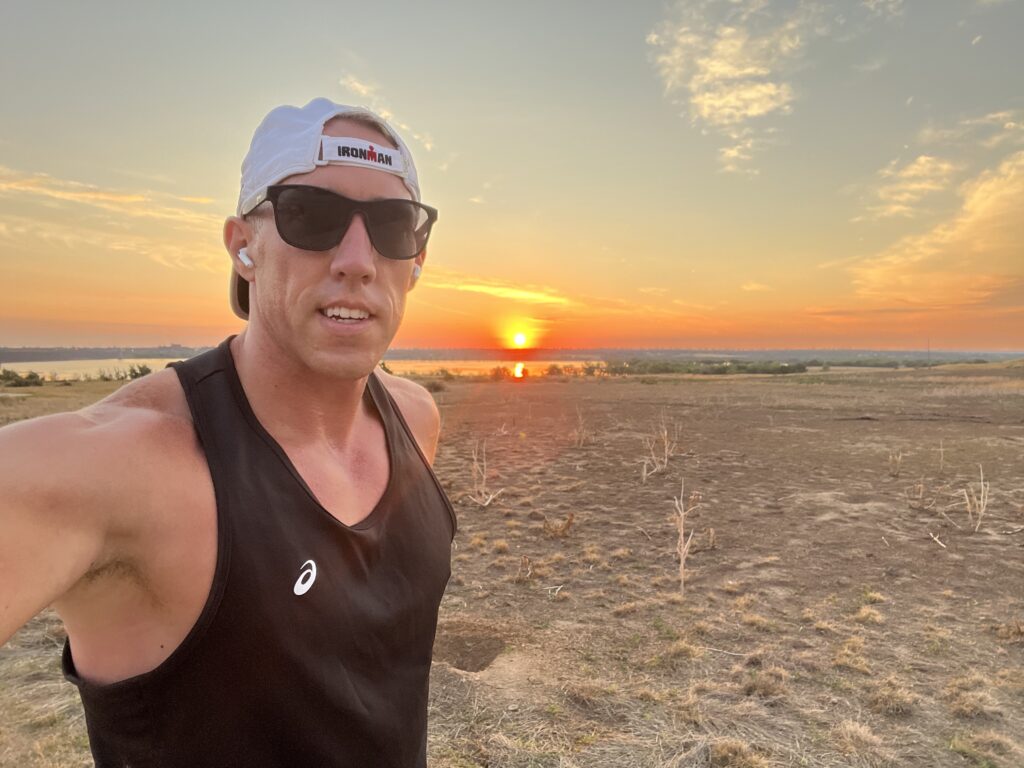As a beginner runner, running distance can seem like intimidating and overwhelming. But with proper guidance and consistency, it’s possible to increase your mileage while avoiding injury or burn out.
Let’s explore how to get started as a beginner runner, what kind of distances you should be aiming for, helpful tips on progressing safely without overexerting yourself, plus key considerations for staying motivated along the way. So if you’re ready to kickstart your journey towards becoming a fitter and faster runner – let’s dive in!
When you’ve read this post about beginner runner distance, check out Starting from Zero | Beginner Runner Pace to learn more about what is the average running pace for beginners and how does running pace work.
How Far Should a Beginner Runner Be Able to Run Without Stopping
Hands down, the #1 question from everyone just starting their running journey is something to the effect of, “How long should a beginner runner run for?
This makes sense. Whenever we are going after some goal, we want to know our destination and what the journey to get there will or should be.
Top 4 Beginner Runner Distance Points
Solely focusing on distance here, view the running distance not from an end point perspective, but a checkpoint process.
None of us will lace up our running shoes for the first time and finish a marathon with a BQ time. Our end goal may be a Boston Marathon qualifying time, but we don’t start there. As runners, we start with our first 5k. Then, we progress to an easy half marathon attempt. We add a 20 mile long training run. Then, after these and many other checkpoints, we arrive at the goal race with the goal of qualifying for Boston.
If all we focus on is the end goal running distance, we will struggle to build the proper, healthy, non-injured runners body.
To simplify this for beginners, we’ve focus the following on the top 4 running distance related aspects. As always, we have plenty more information for beginner runners over at our primary checklist page too.
- Start with a Manageable Distance
- Listen to Your Body
- Set Realistic Goals
- Track Your Progress
1. Start with a Manageable Distance | When starting out running, it is important to take things slow and not try to do too much at once. Start by running short distances of 1-2 miles at a comfortable pace and increase the distance gradually over time as you become stronger and more experienced. Often, we all get either too greedy or over confident. *Raises hand in guilt*. There is nothing good that comes from getting injured by pushing too far, too soon. There’s always time to add distance. We can’t take distance “off” our body. Make it manageable and you’ll make it further.
2. Listen to Your Body | It is important to pay attention to how your body is feeling and not push yourself too far. Easier said than done. If you feel tired, take a break or stop running for the day if necessary. Add days off in your beginner runner training plan. If you feel a twinge, address it. Notice I didn’t say stop running. Listening to your body does not mean just throwing in the towel every time things get a little difficult. Runners need to be cognizant of where their ability and body are at all times. Yes, this all sounds hippy-dippy. Give it a shot, open your ears to your body yelling at you, and adjust accordingly.
3. Set Goals | Having specific goals can help motivate you and keep you on track with your running progress. Make sure your running distance goals are realistic and achievable in order to stay motivated and build confidence. Getting ahead of yourself on the distance before it’s “time” can lead to major injuries and prevent future progress.
4. Track Your Progress | Keep track of your runs, including distance and time, so that you can see how far you have come and what goals are left to reach. Whether you use apps like Strava, Runkeeper or Apple Health or just pen and paper, somewhere you should know where you started in comparison to where you currently reside. Within a tracker, you can see if you’ve pushed outside a normal distance increase curve or if you are on track.
Yeah, But How Long
Right now, you may be asking yourself, “How long does it take to start improving at running?”
It takes as long as need be. I know, super annoying.
Unfortunately, at least from a beginner’s perspective, becoming a better runner takes time. The distance will come with time. The confidence in said distance will come in time. The patience with distance will come in time.
Everything about running is about patience.
We all want everything now. I’m guilty of it too. We all are, whether it’s in running or some other avenue of our lives. However, if we give it time, a beginner runners distance will creep skyward. Their ability will shine through those early struggles. Right now, we may be just starting and everything from a mile jog to a 5k distance may make us question, “Why can’t I run far without stopping?” Without those running moments in the hear and now, we won’t be able to appreciate the easy 20 mile training run down the road.
Our One (Running Distance) Ask of You
Give yourself time.
Don’t rush it.
Everything detailed here is to get you going. We have plenty of other posts and running checklists to take your running to the next distance levels in due time.
Be patient with the here and now. We will get there. You will get there. Stick to the top beginner runner distance tips mentioned here and in 4-6 months, you’ll know why the mindset and focus were so critical in the early days and weeks.


2 thoughts on “Starting from Zero | Beginner Runner Distance”
Comments are closed.